Many Point of Sale providers offer product returns on POS. However, how it really works within your system is summarized in one sentence on the website, not mentioned in the demo, or buried deep within a user guide that’s hundreds of pages long.
Researching POS systems shouldn’t be that hard.
To help retailers, we’ve compiled a list of 7 questions to ask POS providers about their product returns feature. No more confusion – these questions will help you decide if a POS system can solve your product returns challenge.
Question 1: How can I process product returns on POS without a receipt?
If you’ve been selling for quite some time, you probably have dealt with a product returns request without receipt. A customer may return a product to your store, but it’s a gift and they lost the original receipt.
Retailers may accept returns without receipt for various reasons. Some want to create a better shopping experience. Others do it out of legal obligations because the product is not working properly.
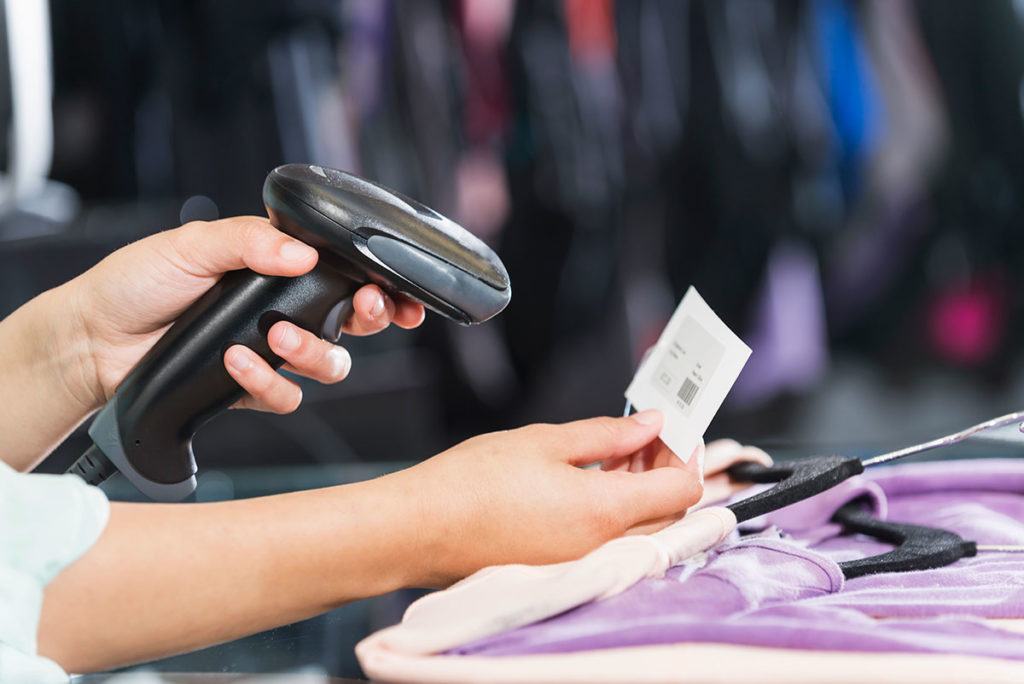
Accepting return without receipt has a high risk of fraud, and you should consult with the provider carefully on their solution. Ask them:
- If they have other methods to find a past order without the receipt: Can you collect customer’s data and use phone number to search and view their order history? If you’re selling products with unique serial number, can you search for order using serial number? Ask them to show you some options in a live demo.
- If you can you create an ad hoc product returns on POS: In case the cashier cannot find the past order, the return is not associated with any order. How will the system handle the changes concerning inventory, income, tax, and so on?
The ability to offer flexible and lenient return is critical to stay competitive in the retail industry. It’s a must have feature on a good POS system.
Question 2: Do you have the option to return items to stock on POS?
Depending on your business rule, you may accept items of different conditions.
Many customers return a product because they change their mind or the item is of the wrong size. These items might be unused and in perfect condition. On the other hand, some of your products might be slightly damaged due to shipping, or have cosmetic blemishes.
There are many ways to cash in on these returned-to-stock items. For example, you can sell them at a reduced price or send them to an outlet store. As a result, when customers return a product, you might want to record a change in inventory.
Some POS systems come with a “Return to stock” button right on the return screen. When you choose to return items to stock, the quantity is adjusted and added to the store again.
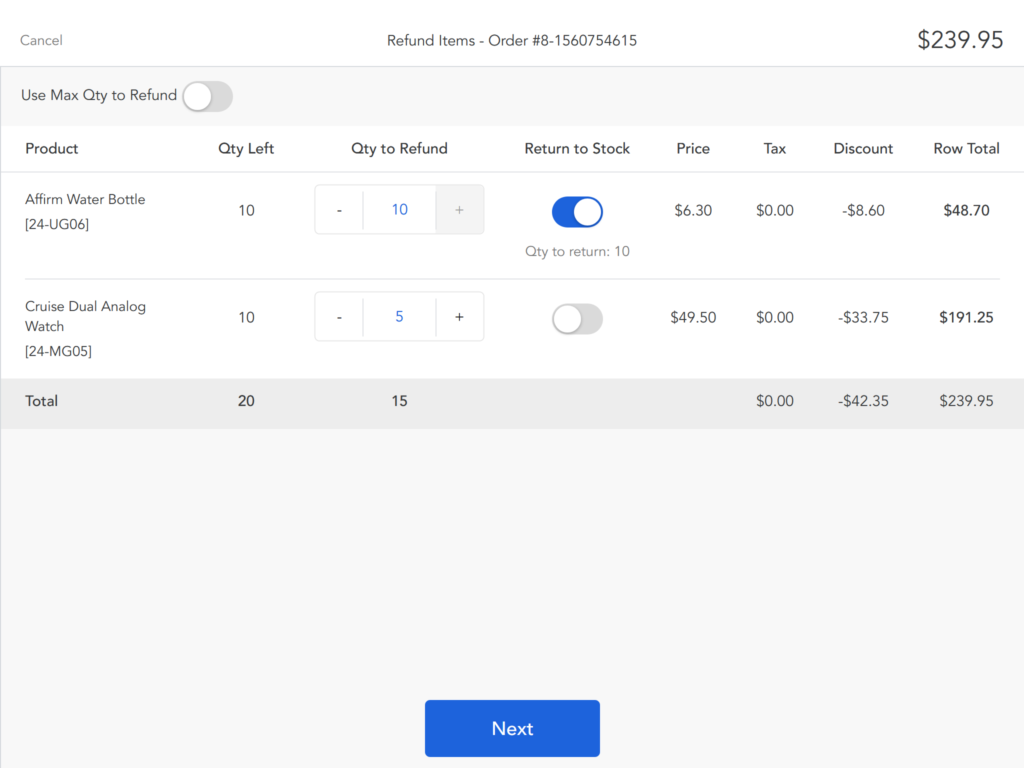
However, you might also want to track stock that isn’t returned to inventory. This will help you identify problems with product quality or shipping. As a result, you should ask the POS provider if this is possible. If not, ask them for a workaround, such as labeling these items as “unsellable”.
Question 3: What are the options to return payment to customers?
Customers in the digital age expect to receive payment without issues. Here are some popular methods to refund payment:
- Refund to original payment method: This is the most popular method to return payment. If you’re processing credit card or some forms of contactless payment via a terminal, make sure to mention the device as well.
- Refund to store credit/gift card: Many POS systems offer loyalty features such as store credit or let you sell gift card. This is a good strategy to keep customers loyal to your brand. Store credit/gift cards are also a good alternative to cash in case you’re accepting return without receipt. Refund by cash: Cash should be the last resort if you’re unable to return payment with the previous methods.
- Refund by cash: Cash should be the last resort if you’re unable to return payment with the previous methods.
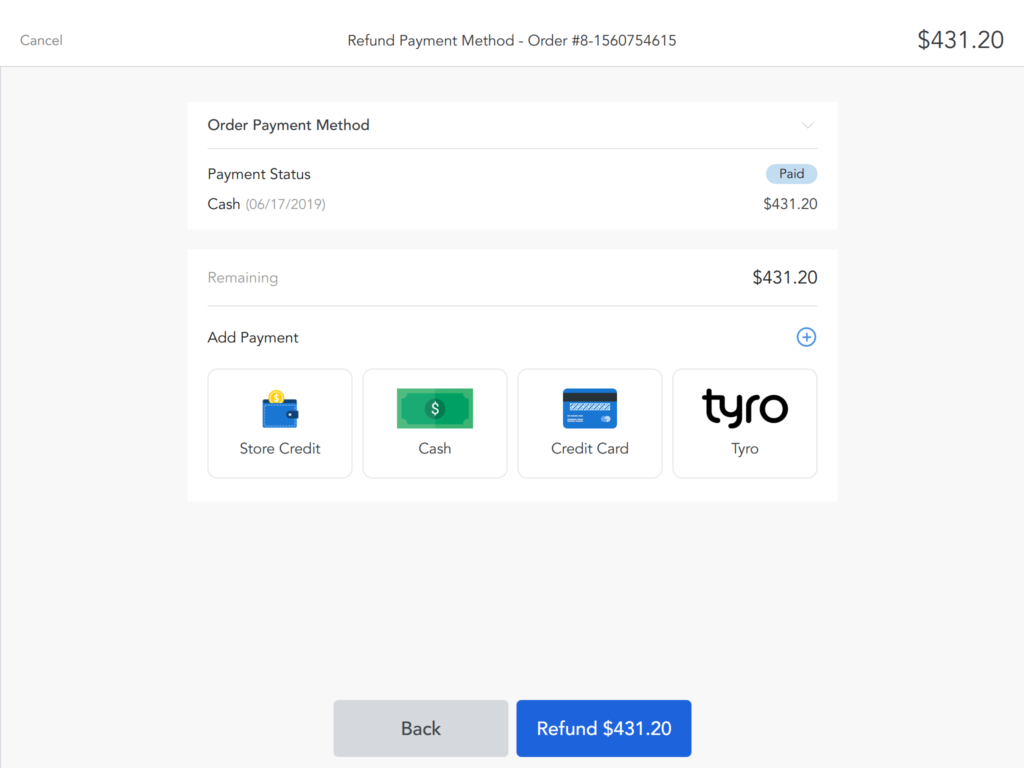
Question 4: Do you offer product returns analysis and report?
Product returns on POS provide valuable data to identify problems and optimize operations. With these insights, you can:
- Improve product quality;
- Find habitual returners/”renters”;
- Update inspection requirements for suppliers;
- Reduce return rate and boost customer satisfaction.
Many solution providers let you implement product returns on POS. However, they don’t always follow with analytic tools that give a comprehensive view of the return situation. This makes it time-consuming to find the statistics you need.
As a result, you probably should ask potential POS providers if they have returns analysis and reports. For example, if they could help you track product returns on POS by SKUs, suppliers, stores, customers, and return reasons.
Question 5: Does product returns on POS work without the Internet?
Most POS systems have some degree of offline functionality. You should discuss with the POS provider about your workflow, and ask them if all the steps can be done offline. For example:
- Can the staff look up past orders from 3 months ago?
- How can the cashier refund payment to customer?
- What happens when the cashier completes product returns on POS?
Question 6: Can I restrict return permission to certain personnel in-store?
Giving every staff the ability to process returns is convenient, but also poses a high risk of fraud and errors. Instead, many business owners delegate this task to managers. This means managers are the ones who decide to accept the request. They’re also the ones to perform refund/exchange and issue store credit if necessary.
If your business only allows certain personnel to manage returns, you should ask the POS providers if they can set up custom permission levels for product refund & exchange.
Question 7: What did past customers say about your return feature?
One of the best ways to research a company is through testimonials and third-party reviews. If you’re contacting a POS provider, make sure to ask them about past customers. These are the people who actually use the POS in their store, and can give you insights into the products and services of that provider.
3 bonus questions for Magento retailers
If you’re selling online on Magento, we’ve got 3 extra questions to help you get the best solution for your return challenge:
Question 8: Can the POS be integrated with Magento website and inventory?
If the POS can be integrated with your Magento site (and Multi-Source Inventory if you’re using Magento 2.3), you can easily manage all parts of your business from one platform. A POS for Magento will ensure:
- Real time data synchronization: when the cashier completes the return, it will be updated to Magento backend immediately. You shouldn’t have to wait until the end of the day to sync everything into the system.
- Correct sales, stock, and customer information: the data from your POS will flows to the rest of your system. This eliminates double entry and increases accuracy for your system.
- More time for you and your staff: An integrated POS gives your staff access to different parts of your system. This helps them find past order quickly, whether it’s from another store or processed by another staff. It means your staff can spend less time on updating the system and more time on:
- Better customer experience: when staff has access to all the relevant and correct information, they can serve the customer better. If the customer isn’t happy with a product, the staff can suggest a replacement, process an exchange request, and even arrange for later delivery. A happy customer means better branding and more business opportunities in the future.
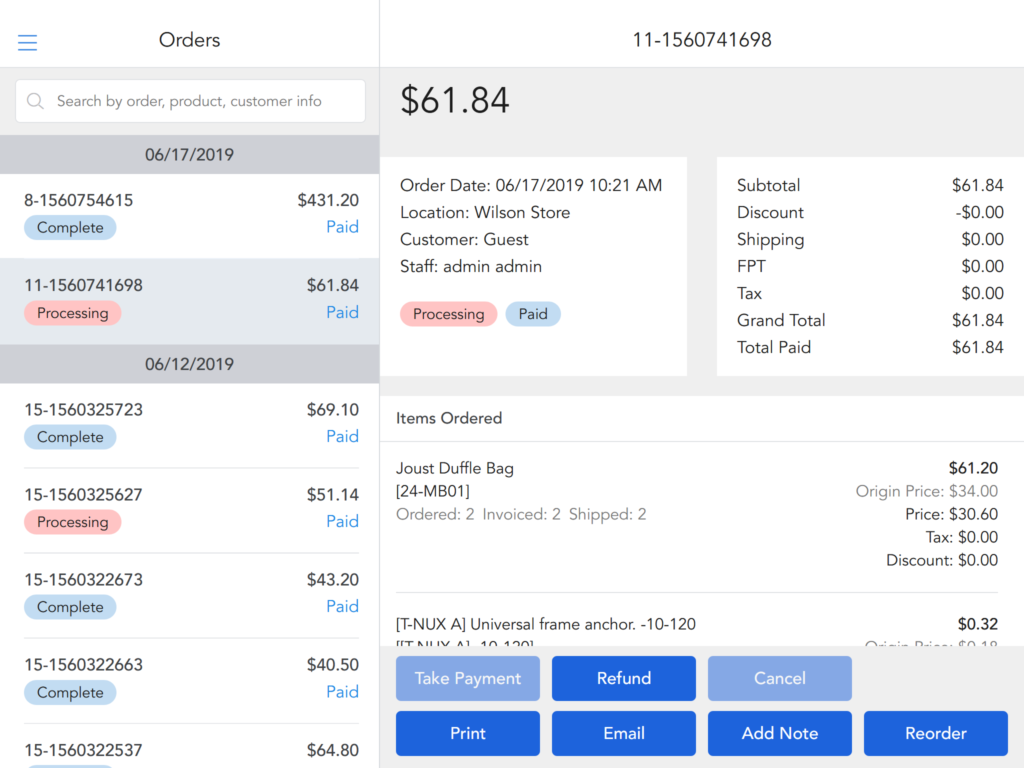
Question 9: Can I process product returns on POS for both online and offline orders?
If you’re selling both online and offline, you might want to ask about Buy online, return in-store (BORIS). This means that a customer can go to your store and return an item they bought online.
Your customers don’t care about inventory logistics or barriers between sales channels. They want to return how and when they want. If you’re aiming for frictionless return and omnichannel experience, this is a must-have feature in your POS.
Question 10: What information will be updated into the Magento system when I complete a product return on POS?
If you’re managing your business from Magento, it’s essential to track data flow from your POS to Magento. In particular, you can ask what data the POS sends to the Magento database in the case of:
- Product exchange: By default, Magento doesn’t support editing an order or adjusting negative quantity for product.
- Product returns without receipts: This might cause extra inventory or missing fund in your records.
On the other hand, if you’re using a non-native Magento system that works via integration, synchronization might not be real time. Ask your POS providers about how often the POS syncs with Magento, and how long it will take. This will help you prevent any disruption during work hours.
Conclusion
Product returns on POS is a must-have feature for retailers, yet many are not researching this feature well enough. We hope the 7 (plus 3) questions above will help you find the best-fit solution for your product returns workflow, and deliver a better experience for your customers.
If you’re curious about how Magestore Magento POS can address your product returns challenges, please book a FREE consultation with us. We’ll work with you to build a system that works for your awesome business.

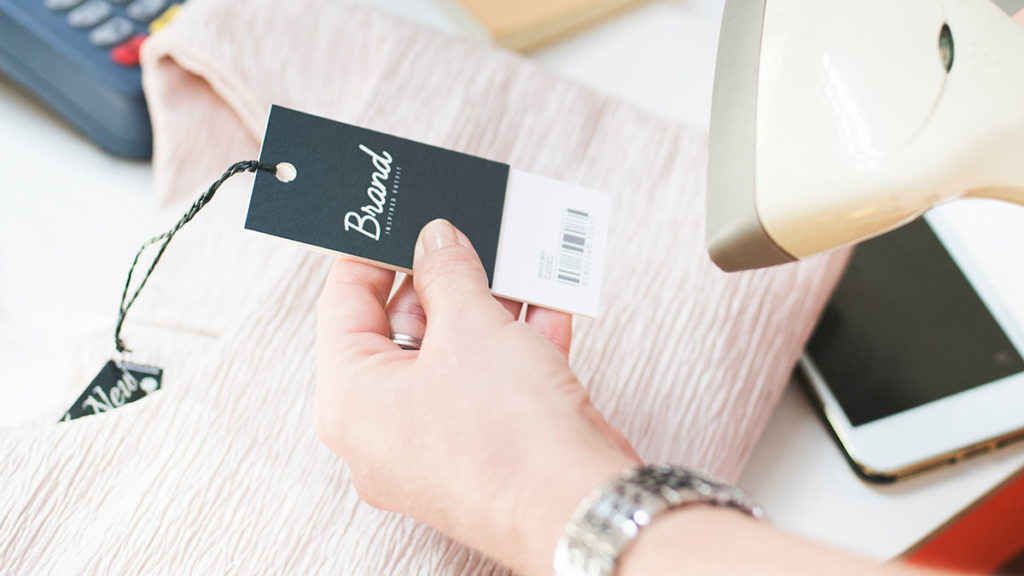



1 Comment
Hey Jackie,
Incredible Post! Thanks for sharing tips Researching product returns on POS: 7 questions retailers should ask providers. its really helpful for ecommerce provider.
Thanks a lot!